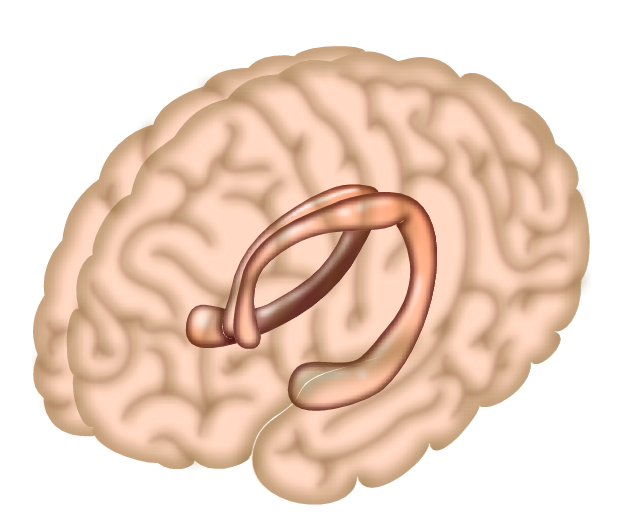A team of researchers affiliated with multiple institutions in the U.S. has found that reciprocal repulsions of cell-surface molecules prevent tangling in parallel hippocampal networks. In their paper published in the journal Science, the group describes how they used single-cell RNA sequencing to profile developing cells in the hippocampus and what they learned by doing so. Yajun Xie and Corey Harwell with Harvard Medical School have published a News & Views piece in the journal Nature outlining the work done by the researchers on this new effort.
Prior research has shown that the hippocampus in mammals has two unique networks made up of neurons and axons—one is used to process spatial information, the other object related information. For several years, researchers have wondered how the brain manages to keep the two networks from becoming tangled with one another. In this new effort, the researchers sought to find the answer.
Prior research has also shown that the hippocampus is made up of three subfields that have been named CA1, CA2 and CA3, and that neurons in CA1 project to targets in the subiculum—projecting means growing toward an attracting element. Projections in CA1 in the subiculum are organized along an axis where neurons in the proximal part of CA1 project to the distal subiculum and neurons in the distal CA1 project to the proximal subiculum.
Researchers working on a prior effort found that a cell surface molecules called teneurin-3, which are expressed by neurons in the distal subiculum, bind to one another and create an attraction for axons coming from the proximal CA1. It was suggested at the time that it was likely that another type of surface molecule worked in similar ways to create an attraction between neurons in the distal CA1 and the proximal subiculum. The researchers used single-cell RNA sequencing to find that surface molecule, which turned out to be latrophilin 2. Further study showed that not only do the two surface molecules act as an attractive force for their respective axons, they also serve as a repelling force for neurons from the other network. Such repelling forces, the researchers note, help to keep the two networks from tangling.
Where am I going? Just ask your subiculum
More information:
Daniel T. Pederick et al, Reciprocal repulsions instruct the precise assembly of parallel hippocampal networks, Science (2021). DOI: 10.1126/science.abg1774
Yajun Xie et al, Attraction and repulsion cooperate during brain-circuit wiring, Nature (2021). DOI: 10.1038/d41586-021-01502-0
2021 Science X Network
Citation:
Reciprocal repulsions of cell-surface molecules prevent tangling in parallel hippocampal networks (2021, June 7)
retrieved 7 June 2021
from https://medicalxpress.com/news/2021-06-reciprocal-repulsions-cell-surface-molecules-tangling.html
This document is subject to copyright. Apart from any fair dealing for the purpose of private study or research, no
part may be reproduced without the written permission. The content is provided for information purposes only.
